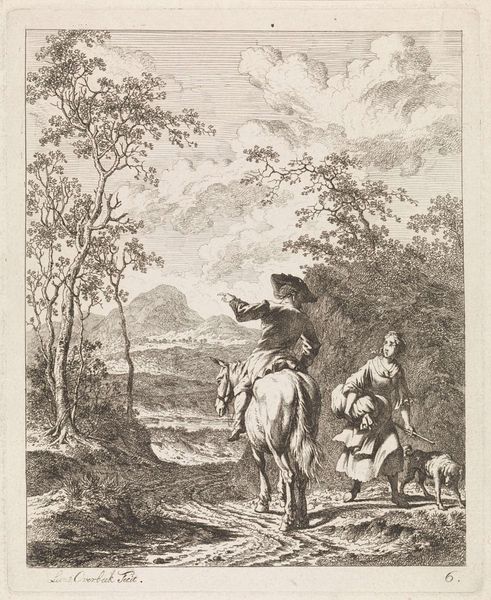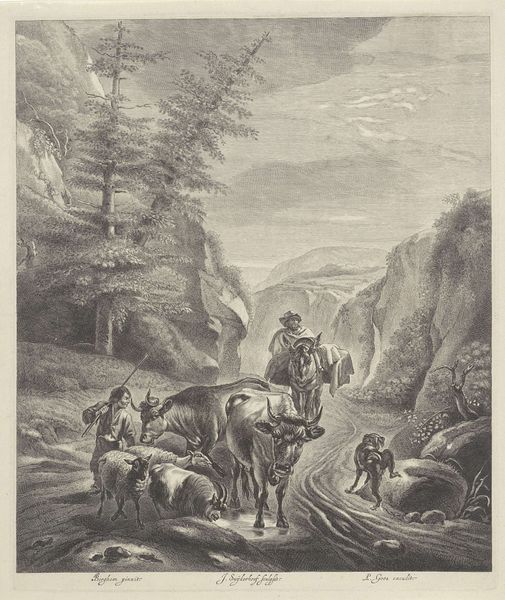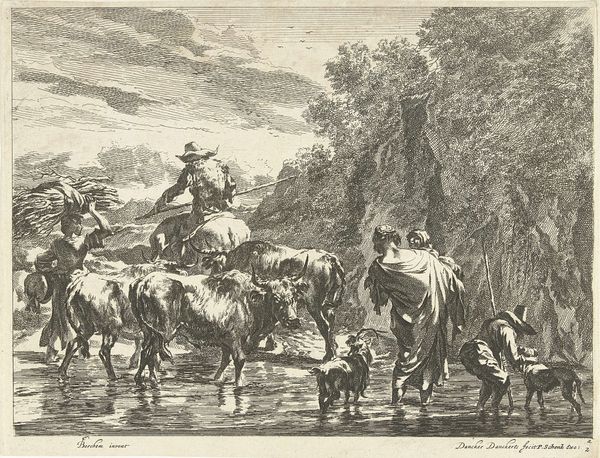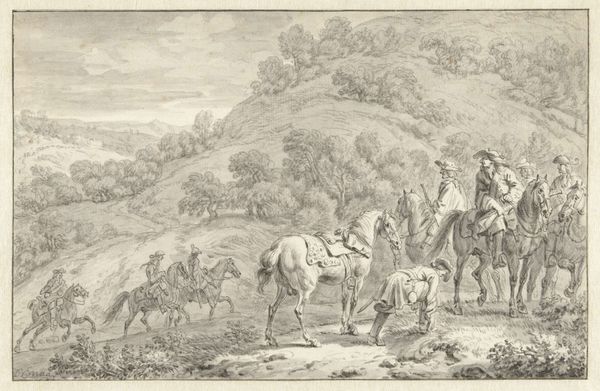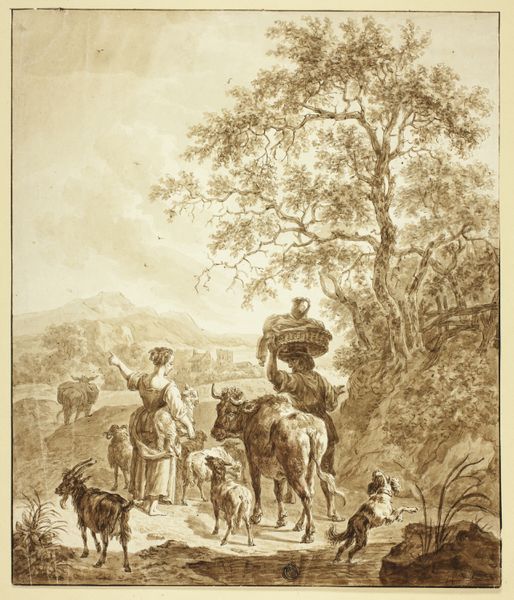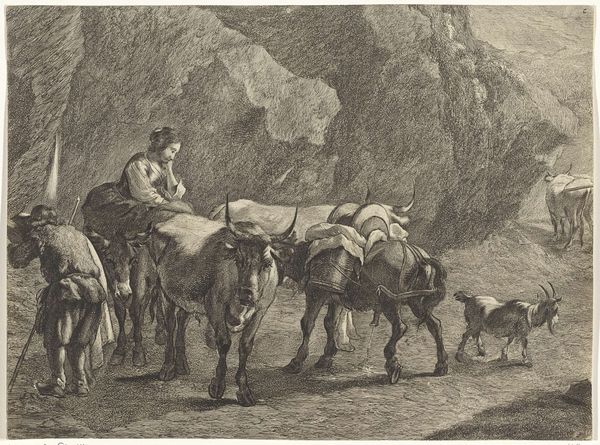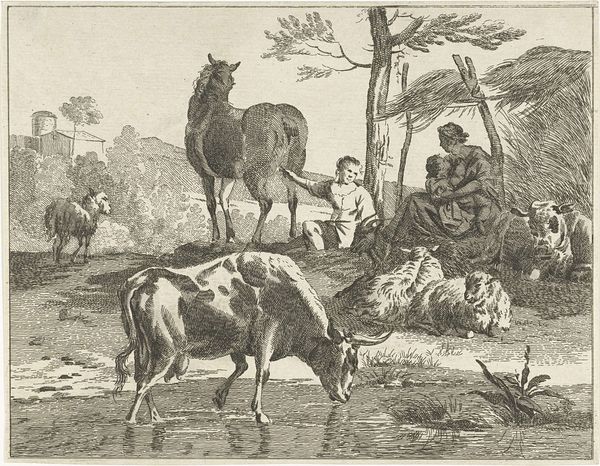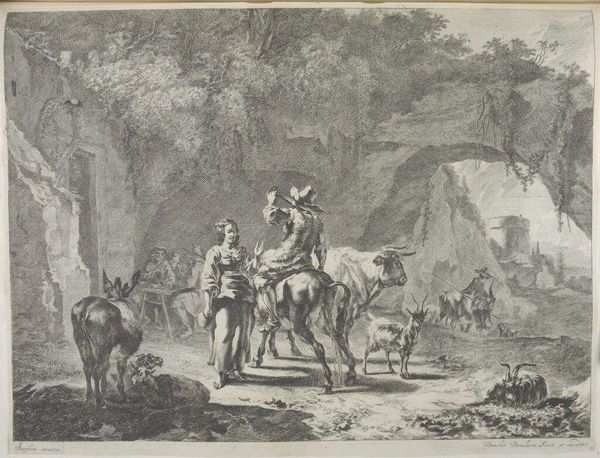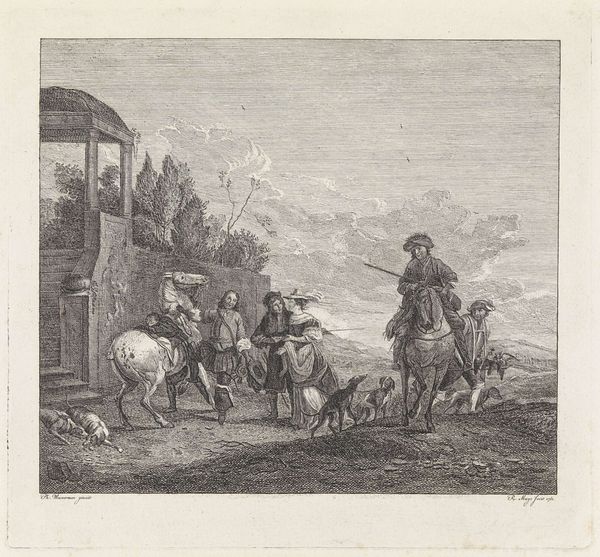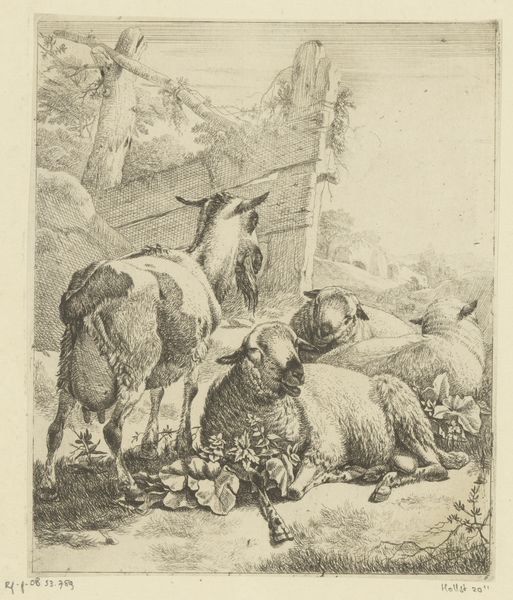
drawing, print, paper, engraving
#
drawing
#
baroque
# print
#
landscape
#
paper
#
genre-painting
#
engraving
#
realism
Dimensions: 267 × 213 mm
Copyright: Public Domain
Curator: Cornelis Visscher’s “The Ford, plate 1 from Four Landscapes,” dating to the late 1640s, invites us into a meticulously engraved pastoral scene. I'm immediately struck by the careful use of line and texture to create a compelling sense of depth. What’s your first impression? Editor: My first impression is one of labor, both human and animal. The crossing feels arduous, less an idyllic escape and more a representation of the day-to-day realities for many during that period. The woman is accompanied by a dog and her heavy bags while the mounted rider carries what seems like weapons. I question the implications. Curator: I appreciate that reading. Look at how Visscher contrasts the figures crossing the water with the crumbling architectural elements in the background. The precise cross-hatching defines forms, suggesting the impermanence of human endeavor against the enduring power of nature and time. Note the contrast of the darks with lighter forms across the picture. Editor: Yes, and situating the artwork within its historical context provides additional nuance. Seventeenth-century Dutch landscapes often presented an idealized version of rural life, subtly reinforcing societal power structures and colonial endeavors. Could Visscher, through his emphasis on work, be questioning these visual tropes or reinforcing class differences? The woman seems subservient in stature and location within the landscape, despite her role in traversing through the water with her family members. Curator: Or perhaps he's merely observing a social dynamic? The composition leads our eye carefully, left to right. Observe how he employs both straight and curving lines. The figures draw us into a structured narrative through the use of implied geometry, with a powerful horizon line created through dark vs light contrast, the use of these simple concepts keeps my gaze intrigued! Editor: But such "observations" are never neutral. Art is a language that expresses meaning and values. And for me, that composition raises further questions of who has the privilege of viewing labor and life from a comfortable distance—mounted and armed versus carrying burdens on foot? The sky almost hints at some turmoil, adding to my belief the work contains a hint of anxiety rather than peace. Curator: A stimulating perspective. It pushes us to engage not just with the visual skill on display but with its potential societal implications, no matter if accidental or intentionally designed. Editor: Indeed, and these questions make us realize we are more than passive spectators but active interpreters. I’m glad to re-evaluate this image!
Comments
No comments
Be the first to comment and join the conversation on the ultimate creative platform.

